
by John Boston
Once more, the question: must the middle of the road be the ceiling? Will this November Amazing present us anything more interesting than the competently readable fare featured in recent issues? Well, yeah, a little, but it takes a while to get there.
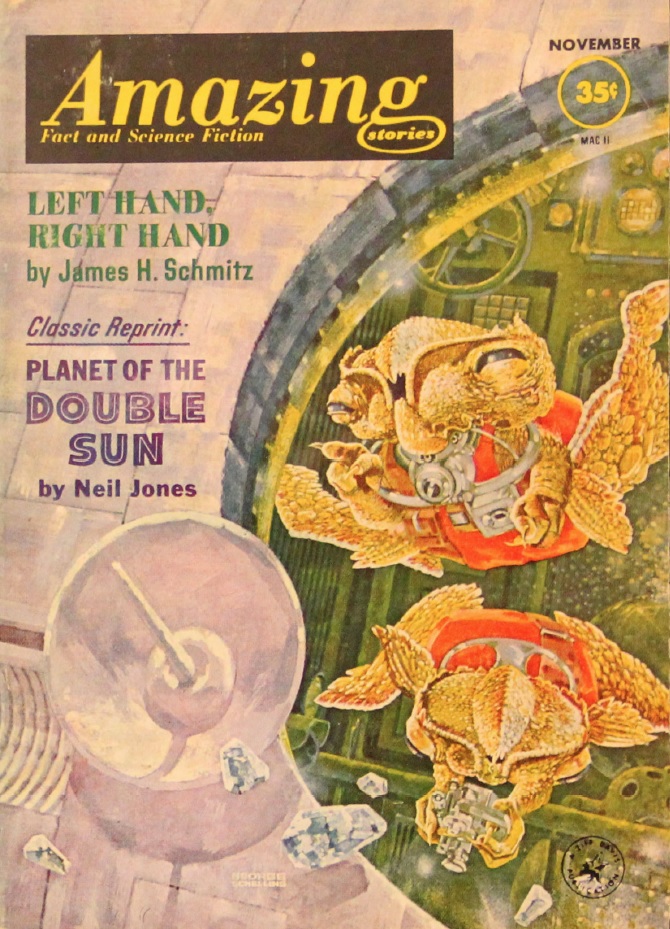
Left Hand, Right Hand
James H. Schmitz’s lead novelet Left Hand, Right Hand recalls my comment on his last story: “capable, even lively, deployment of material that otherwise would border on cliche.” It’s essentially a POW escape story: nasty aliens have captured the interstellar explorers from Earth, upon which they seem to have designs. The protagonist is plotting to get away and warn Earth in a drone ship he has been surreptitiously converting under the aliens’ noses, while the people in charge of the Earth expedition seem to be collaborating with their captors. As the title suggests, there’s actually more than that going on, and the plot is actually pretty clever; the aliens are well developed and the resolution turns on what’s been learned about them. But ultimately Schmitz is just capably rearranging the usual SF furniture. Three stars.
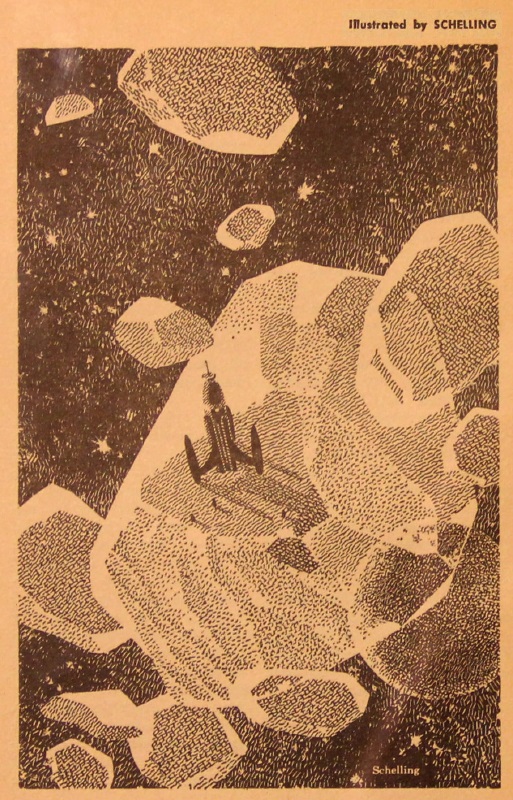
Schmitz gives the impression of a formerly part-time writer who has quit his day job and turned full-time. From 1949 through 1961, he published zero to three stories a year in the SF magazines. In 1962, he has published eight stories in the SF magazines plus one in Alfred Hitchcock’s Mystery Magazine, plus the novel A Tale of Two Clocks. Maybe the demands of high production have something to do with the routine character of these recent stories.
The Planet of the Double Sun
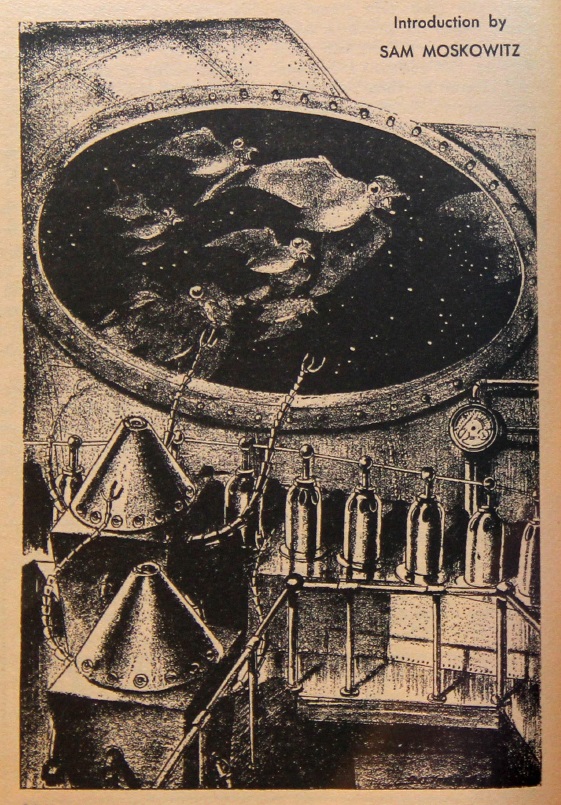
The other novelet is the “Classic Reprint,” Neil R. Jones’s The Planet of the Double Sun (from the February 1932 issue), the second in the series about Professor Jamieson. The Prof had himself put into orbit when he died, and was resurrected eons later when the exploring Zoromes—brains in robotic metal bodies—installed him in his own metal body and took him with them. Now, on a planet with one blue sun and one orange one, they quickly encounter a sinister mystery about the apparent extinction of anything larger than birds, and almost as quickly are threatened with extinction themselves from a menace having everything to do with the suns. In fact the end of the story seems to be the end for everyone, except that Sam Moskowitz’s introduction says the series extended to 21 stories. This one is told in a peculiar naive style, plain and simple (except for the occasional long word) to the point where it sometimes reads as if written for those just graduated from See Spot Run, or new immigrants striving to learn English. It has a certain archaic charm. Three charitable stars.
World Edge
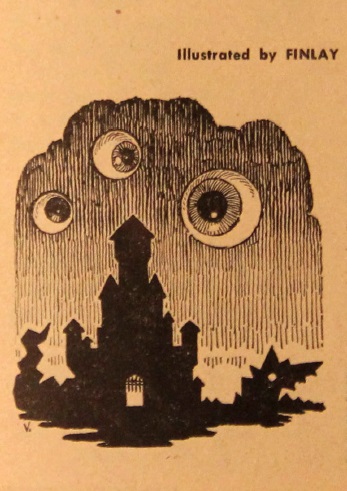
World Edge by Jack Egan—apparently his first story—is set in a world which seems hallucinatory and soon enough is shown to be just that. Unfortunately it’s about the least interesting hallucination I’ve encountered, reminiscent of something you might see on the Saturday morning cartoon shows, and the “explanation” is no more interesting. Two stars, again being charitable.
The Last Days of the Captain

Unusually, this issue has two stories by women. Kate Wilhelm contributes The Last Days of the Captain, in which a colony planet has to be evacuated because the terrible aliens are coming, but Marilyn Roget has to wait for her husband and son to return from a hunting trip. The rigid and dutiful Captain Winters stays behind the main party to wait with her as long as possible, then leaves with her on an arduous futuristic-car trip through the wilderness, leaving a vehicle so husband and son can follow if they ever show up. Various psychological tensions are acted out along the way, but it never adds up to much for me, and the Captain is still standing at the end despite the title. Three stars, barely, for good writing.
Black and White
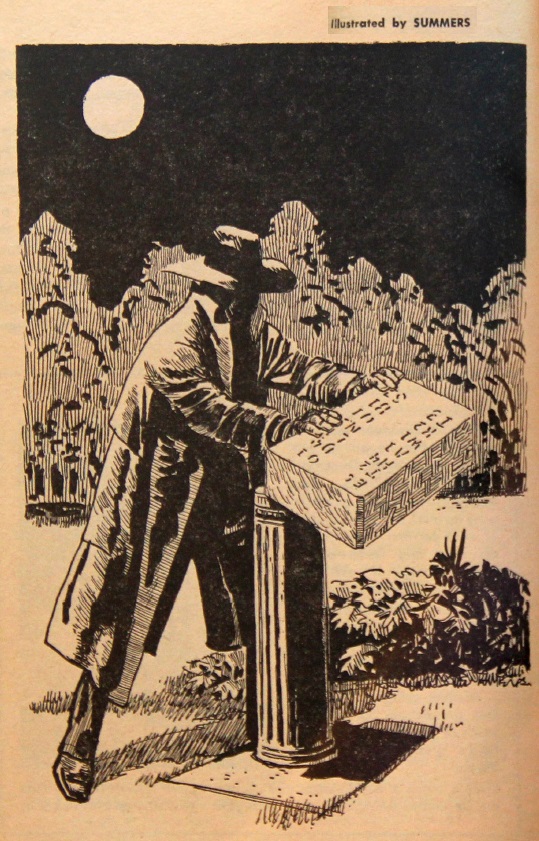
Black and White by Marion Zimmer Bradley is something else entirely. Nuclear war has ended the world as we know it, leaving only two survivors, who live in a New York bar that has miraculously survived—though the bottles didn’t, so they can’t get drunk, and they can’t go barefoot for all the broken glass embedded in the floor. Problem: he’s a Negro and she is white. They have agreed that their racial animosity precludes any attempt to continue the species, and in any case he’s hiding a terrible secret: he’s a Catholic priest. They row over to New Jersey to hunt rabbits, and there they discover that they aren’t the only survivors after all—there’s a white guy, and nothing good comes of it. The story quickly turns nasty and powerful, most likely fuelled by the revulsion prompted by certain recent events like the attacks on the Freedom Riders. In any case, it is intense, and it cuts sharply through the haze of the routine that otherwise attends this magazine. Four stars.
Life Among the Stars, Part IV
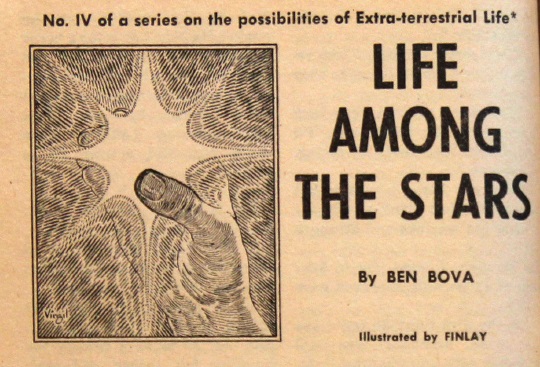
Ben Bova has Life Among the Stars, the fourth in what was billed as a four-article series on extraterrestrial life. It mainly concerns stars, how little we know about whether they have planets, and how hard it is to find out. He concludes with the declaration that we’ve gotta have faith that there is life and intelligence elsewhere than Earth. Further: “Those of us who have the faith—scientists and science fictioneers, dreamers and technicians—realize full well that this is the only adventure worthy of a civilized man.” (Emphasis in original.) The only one? How about making peace, promoting civil rights, curing diseases, and alleviating poverty, for starters? I think you’ve gotten a little carried away, Mr. Bova. Nonetheless, three stars for interesting material well presented.
And—what’s that sound? Oh, it’s the silence left by the departure of Benedict Breadfruit. Requiescat in pacem, no revenants please.


An interesting mixture of stories in this issue.
"Left Hand, Right Hand" was a solid, competent SF story, and would have graced the pages of Analog well. I figured out the general outline of the main plot twist (if not in its exact details) pretty quickly, but it wasn't bad.
"World End" wasn't much beyond its dreamlike surrealism. Great illustrations by the talented Virgil Finlay, though.
"The Last Days of the Captain" seemed like middle-of-the-road space adventure at first, but then evolved into a fine study of characters under stress.
"Black and White" was a powerful variation on "The World, the Flesh, and the Devil." Making the character a priest made the conflicts more intense. I haven't been too crazy about the little I've read by Bradley — she tends to write science fantasy adventures — but this story really cut to the bone.
"The Planet of the Double Sun" combined a naive narrative style with some real Sense of Wonder. Reading it was an odd experience, as if I were reading the comic book version of Olaf Stapledon.
This issue definitely belonged to its female writers.
I read the Wilhelm, the Bradley and the Bova… will probably leave the Schmitz on general principles.
I liked the end of Devil much better, but Black and White is a good story — and I wonder if Amazing is sold in the South with that controversial back cover…
I think Bova plays fast and loose with his facts. I know there are some suspected companions to stars based on astrometrics, but I don't know that they're accepted as 100% confirmed by anyone.
The first four Hollerith cards I ever punched were the Fortran program:
PROGRAM
1 GO TO 2
2 GO TO 1
END
I think 3 stars for "Planet of the Double Sun" is pretty charitable indeed! Can I canvas you for a March of Dimes contribution? March of $100's?
The MZB story, if a a bit obvious, is one of her best — she was not particularly good at shorter lengths.
Agree about the Wilhelm — the writing is good enough to make one overlook some weaknesses. And the Schmitz — fun but routine. I do wonder how he makes ends meet as a full time writer selling, what, a dozen stories a year? Many to penny a word markets.